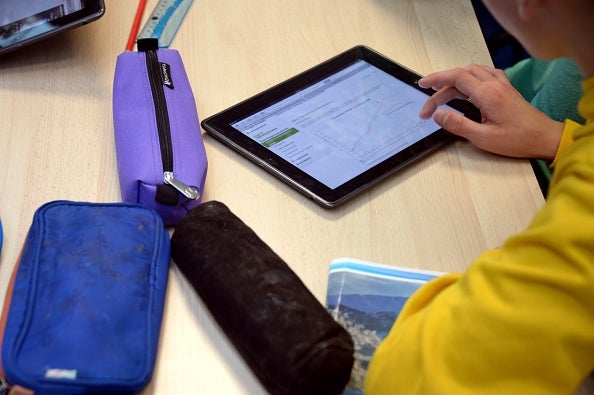The Independent's journalism is supported by our readers. When you purchase through links on our site, we may earn commission.
Modern technology and software is helping to empower students with dyslexia, 3 ways how
The director of one software company looks to help the over 100,000 university students in the UK living with dyslexia

Your support helps us to tell the story
From reproductive rights to climate change to Big Tech, The Independent is on the ground when the story is developing. Whether it's investigating the financials of Elon Musk's pro-Trump PAC or producing our latest documentary, 'The A Word', which shines a light on the American women fighting for reproductive rights, we know how important it is to parse out the facts from the messaging.
At such a critical moment in US history, we need reporters on the ground. Your donation allows us to keep sending journalists to speak to both sides of the story.
The Independent is trusted by Americans across the entire political spectrum. And unlike many other quality news outlets, we choose not to lock Americans out of our reporting and analysis with paywalls. We believe quality journalism should be available to everyone, paid for by those who can afford it.
Your support makes all the difference.Imagine you’re about to embark on a degree in music on your first day at a prestigious conservatoire. You take your seat in your first lecture and notice your classmates are all pulling out reams of blank music sheets. Your teacher enters, takes a seat at a grand piano and starts to improvise.
People start frantically marking blobs on their pages, writing down the score. Incredulous, you sit stunned - how are people writing so fast? How do they keep all the music in their heads? You try to focus, but slowly fill with anxiety as you fall behind and realise that, despite being a fantastic musician, you could fail this degree if writing a score in this way is a required component.
This may seem like a ridiculous notion, but for any one of the over 100,000 university students in the UK with dyslexia, this scenario may feel familiar.
Dyslexic students have a harder time than most. Not only are there pervasive misconceptions regarding dyslexia, but our academic system has been designed against their physiology. After all, while most lessons are spoken, success in education requires a high proficiency in reading and writing. It’s easy to forget the alphabet is, in evolutionary terms, a technology humans have only recently developed - much like musical notation.
Dyslexia is a broad term used to describe a range of neurological differences, such as difficulties with memory, sequencing, auditory processing, and colour-sensitivity that generally exhibit themselves during the process of reading and writing. However, over the last decade or so, dyslexic students have been learning to overcome some of these barriers by harnessing the power of new technologies:
1) Text-to-speech software
For many dyslexic students, absorbing information while reading is a challenge. However, there are now a number of applications which exist that can read text out to users - otherwise known as text-to-speech software, such as TextHelp.
TextHelp was one of the original companies to develop this technology, though basic functionality is now included by default in most modern operating systems. TextHelp also comes with state-of-the-art word prediction and dictionaries to aid with writing, but the real benefit is that students with dyslexia can spend less energy on the process of reading and more on the process of understanding.
2) Audio-based note-taking software
Human memory does not behave like a computer, and you will forget things. In fact, research shows you will forget most of the information from a lecture within a week of hearing it, unless you review periodically. Efficient note taking is, therefore, essential in ensuring information is committed to long-term memory.
There are some great note-taking tools available, including Evernote and OneNote. Note-taking software Sonocent, however, has focused its efforts on designing tools that specifically meet the needs of dyslexic students, such as Audio Notetaker. The software breaks up phrases of audio and displays them as coloured bars laid out like words on a page.
These bars can then be synced to slides, annotated and - most importantly - colour-highlighted to indicate a portion to review. It can be used both for recording lectures and brainstorming ideas. But, essentially, by not having to concentrate on writing in order to capture information, students with dyslexia are able to concentrate their efforts on what is being said.
3) Speech-to-text software
The holy grail - software that could vastly improve the efficiency of writing by essentially doing it for them. In the world of speech-to-text, Dragon NaturallySpeaking by Nuance leads the way. It won’t accurately transcribe a lecture, but it works fantastically for dictation in the right environment.
Overall, these three technologies go a long way in helping dyslexic students succeed in an academic environment. However, who can say they wouldn’t like to be more productive with writing or improve their note taking? These are tools that can aid anyone and, as such, it would not at all be surprising if all students used them in the future.
Dave Tucker is the director at speech annotation and note-taking software Sonocent
Join our commenting forum
Join thought-provoking conversations, follow other Independent readers and see their replies
Comments